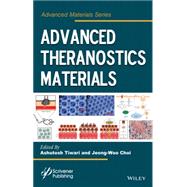The present book is covers the recent advances in the development on the regulation of such theragnosis system and their biomedical perspectives to act as a future nanomedicine. Advanced Theranostics Materialsis written by a distinguished group of contributors and provides comprehensive coverage of the current literature, up-to-date overview of all aspects of advanced theranostics materials ranging from system biology, diagnostics, imaging, image-guided therapy, therapeutics, biosensors, and translational medicine and personalized medicine, as well as the much broader task of covering most topics of biomedical research. The books focusses on the following topics:
Part 1: System biology and translational medicine
- Aberrant Signaling Pathways: Hallmark of Cancer Cells and Target for Nanotherapeutics
- Application of Nanoparticles in Cancer Treatment
- Biomacromolecule-Gated Mesoporous Silica Drug Delivery Systems
- Construction of Functional DNA Nanostructures for Theranostic Applications
- Smart Polypeptide Nanocarriers for Malignancy Therapeutics
Part 2: Imaging and therapeutics
- Dimercaptosuccinic acid-coated magnetic nanoparticles as a localized delivery system in cancer immunotherapy
- Cardiovascular nanomedicine
- Chitosan-based systems for sustained drug release
- Nanocapsules in biomedicine: promises and challenges
- Chitosan-based polyelectrolyte complexes: characteristics and application in formulation of particulate drug carriers
Part 3: Diagnostics and featured prognostics
- Non-invasive Glucose Biosensors based on Nanomaterials
- Self/directed Assembly of Nanoparticles: A review on various approaches
- Ion exchangers – an open window for the development of advanced materials with pharmaceutical and medical applications
New Titanium Alloys for Biomedical Applications








